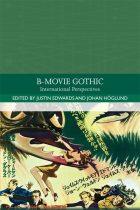
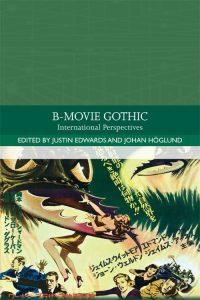 Category III films, introduced to Hong Kong audiences in 1988 as part of the new ratings system, were originally defined as productions reserved for adults over age eighteen. With the majority of plots focusing on stories of murder and sexual exploitation they were often dismissed as mindless low-budget gore-porn created solely for the purpose of generating quick profit for the producers and distributors. Such criticism did little to affect the films’ ratings, as the productions often met with favourable audience reviews and launched mainstream careers of some of their stars. The films also attracted limited academic attention, praised for their naturalistic rendering of the harsh social realities of the lower class life in the 1990s Hong Kong.
Category III films, introduced to Hong Kong audiences in 1988 as part of the new ratings system, were originally defined as productions reserved for adults over age eighteen. With the majority of plots focusing on stories of murder and sexual exploitation they were often dismissed as mindless low-budget gore-porn created solely for the purpose of generating quick profit for the producers and distributors. Such criticism did little to affect the films’ ratings, as the productions often met with favourable audience reviews and launched mainstream careers of some of their stars. The films also attracted limited academic attention, praised for their naturalistic rendering of the harsh social realities of the lower class life in the 1990s Hong Kong.
Although abounding in excessive depictions of violence, HK Category III films are rarely categorized as horror, spanning multiple genres from erotic fantasy and action to crime story and social drama. Frequently with the city at their centre, they reject depictions of Hong Kong as the gleaming symbol of economic prosperity opting for the dystopian vision of crime-infested dark alleys, overpopulated estates and dirty restaurants serving dumplings made from human flesh – a suitable setting for the development of a local brand of urban Gothic.
This article returns to the discussion of the social and cultural dimension of HK Category III films and proposes a Gothic reading of the films’ violent transgressions instigated by, but also directed at monstrous “others” defined by their class, political ideology, and gender. The article focuses on selected crime dramas made mostly in the 1990s, at the time where the category was at the peak of its popularity. The paper explores the films’ engagement with the topic of racism, sexual abuse, family violence, class inequality, as well as political tensions related to the 1997 Hong Kong Handover. The paper also discusses the films’ contribution to the visualisation of Hong Kong as one of the most enduring Asian Gothic cities.
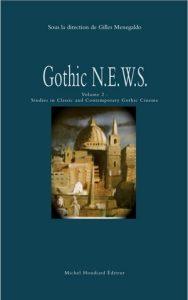 Contemporary Asian horror films seem to be particularly fond of resorting to various techniques of visual recording. This paper focuses in more detail on two such relatively recent films: a Hong Kong production Abnormal Beauty (2004), directed/produced by Oxide and Danny Pang and a Thai film Shutter (2004), directed by Banjong Pisanthanakun and Parkpoom Wongpoom, both of which feature professional photographers as main protagonists and resort consequently to the notion of photography as a key concept for the narrative structure and the films’ visual organisation. The paper will examine the ways the two films exploit photography’s specific relation to death and the afterlife, raising the question whether the theoretical discourse of photography can potentially “westernise” the narrative technique of an Asian film.
Contemporary Asian horror films seem to be particularly fond of resorting to various techniques of visual recording. This paper focuses in more detail on two such relatively recent films: a Hong Kong production Abnormal Beauty (2004), directed/produced by Oxide and Danny Pang and a Thai film Shutter (2004), directed by Banjong Pisanthanakun and Parkpoom Wongpoom, both of which feature professional photographers as main protagonists and resort consequently to the notion of photography as a key concept for the narrative structure and the films’ visual organisation. The paper will examine the ways the two films exploit photography’s specific relation to death and the afterlife, raising the question whether the theoretical discourse of photography can potentially “westernise” the narrative technique of an Asian film.
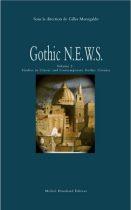
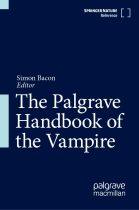
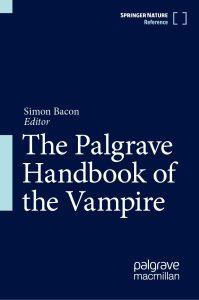 This article discusses the vampiric representation of the jiangshi in Hong Kong and Chinese cinema. The paper argues that while the jiangshi is a monstrous creature in its own right, over the years it has undergone a number of changes to align it with Western vampires. The article begins with a brief discussion of the jiangshi as a literary trope introduced in Chinese stories of the strange, particularly those written during the Qing period. The paper then examines three major shifts in cinematic representation of the creature from its early appearances in the 1980s Hong Kong cinema where it is compared and contrasted with Western vampires, and its post-Handover evolution that follows two different trajectories – reinventing the jiangshi as a pan-Asian horror icon and utilizing it as a tool of the Chinese government anti-superstition propaganda.
This article discusses the vampiric representation of the jiangshi in Hong Kong and Chinese cinema. The paper argues that while the jiangshi is a monstrous creature in its own right, over the years it has undergone a number of changes to align it with Western vampires. The article begins with a brief discussion of the jiangshi as a literary trope introduced in Chinese stories of the strange, particularly those written during the Qing period. The paper then examines three major shifts in cinematic representation of the creature from its early appearances in the 1980s Hong Kong cinema where it is compared and contrasted with Western vampires, and its post-Handover evolution that follows two different trajectories – reinventing the jiangshi as a pan-Asian horror icon and utilizing it as a tool of the Chinese government anti-superstition propaganda.
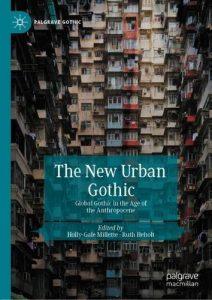 The chapter looks at three distinct themes in what we could loosely term Asian ‘apartment horror’ films that are characteristic of the specific sociocultural contexts and urban cultural economies they represent: (1) the portrayal of the contiguous community where ghosts co-habit the space alongside the living; (2) the alienating character of modern urban communal lifestyles, where ghosts are more visible than the living, and the biggest fear of both groups is that of loneliness and isolation; and finally (3) the placement of the ghost as a representation of a failed dream of economic success that continues to drive the migration of Asian rural populations to the cities.
The chapter looks at three distinct themes in what we could loosely term Asian ‘apartment horror’ films that are characteristic of the specific sociocultural contexts and urban cultural economies they represent: (1) the portrayal of the contiguous community where ghosts co-habit the space alongside the living; (2) the alienating character of modern urban communal lifestyles, where ghosts are more visible than the living, and the biggest fear of both groups is that of loneliness and isolation; and finally (3) the placement of the ghost as a representation of a failed dream of economic success that continues to drive the migration of Asian rural populations to the cities.
 Category III films, introduced to Hong Kong audiences in 1988 as part of the new ratings system, were originally defined as productions reserved for adults over age eighteen. With the majority of plots focusing on stories of murder and sexual exploitation they were often dismissed as mindless low-budget gore-porn created solely for the purpose of generating quick profit for the producers and distributors. Such criticism did little to affect the films’ ratings, as the productions often met with favourable audience reviews and launched mainstream careers of some of their stars. The films also attracted limited academic attention, praised for their naturalistic rendering of the harsh social realities of the lower class life in the 1990s Hong Kong.
Category III films, introduced to Hong Kong audiences in 1988 as part of the new ratings system, were originally defined as productions reserved for adults over age eighteen. With the majority of plots focusing on stories of murder and sexual exploitation they were often dismissed as mindless low-budget gore-porn created solely for the purpose of generating quick profit for the producers and distributors. Such criticism did little to affect the films’ ratings, as the productions often met with favourable audience reviews and launched mainstream careers of some of their stars. The films also attracted limited academic attention, praised for their naturalistic rendering of the harsh social realities of the lower class life in the 1990s Hong Kong.